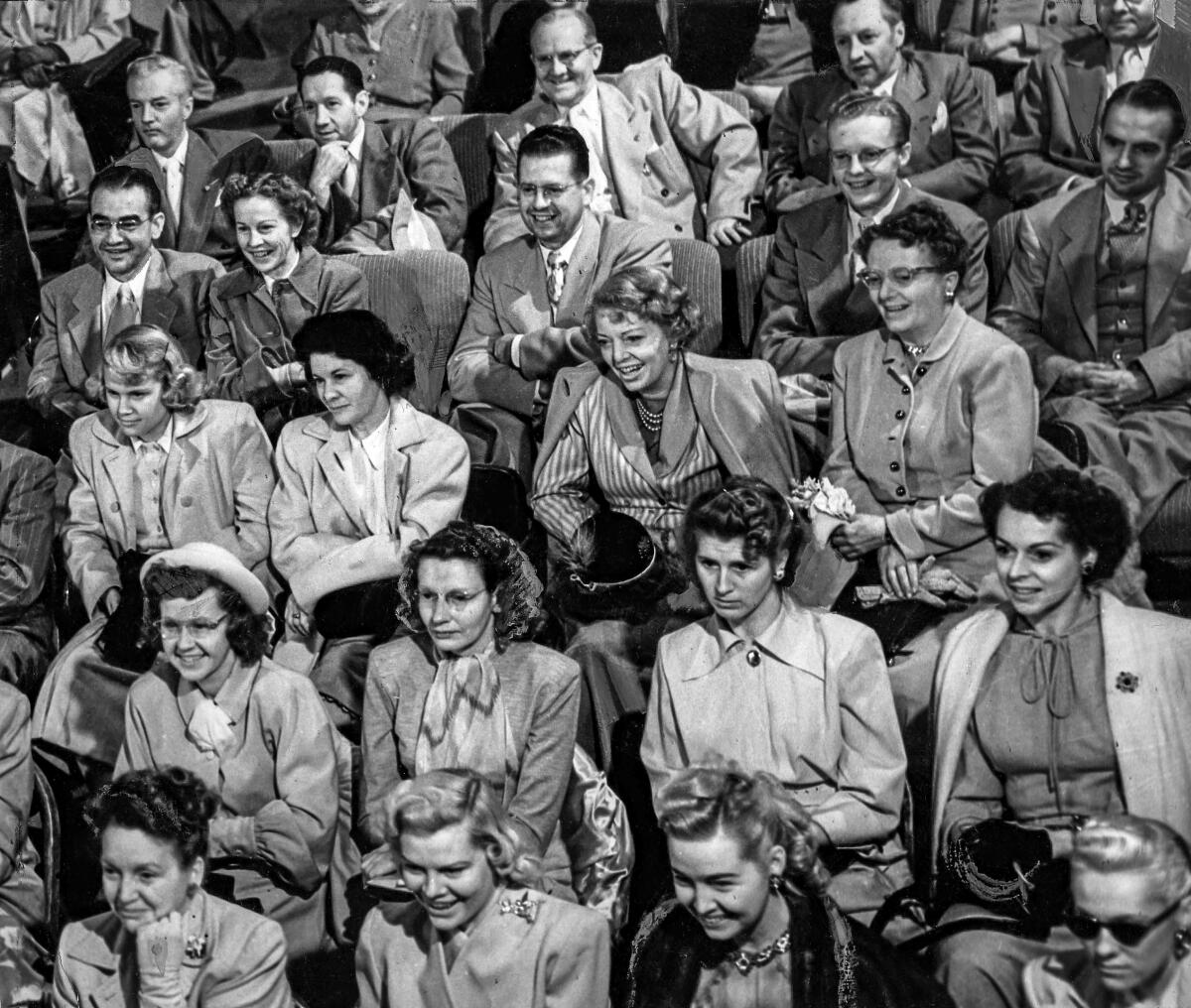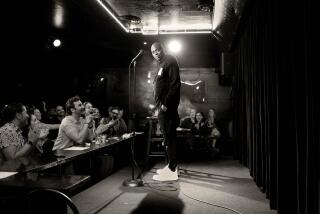From the Archives: 1949 UCLA humor study

During a humor study, UCLA researchers photographed a select audience using infrared light. The photographs recorded audience reactions to a comedy motion picture.
This photo accompanied an Aug. 7, 1949, Los Angeles Times reporting on the humor study:
“Morticians laugh more than teen-agers, it has been proved by Dr. Franklin Fearing and Nicholas Rose, University of California at Los Angeles psychologists.
“When a motion-picture villain’s face is smeared with pie, one man laughs while his companion looks ready to burst into tears.
“Why are individual reactions to humor so great?
“To supply the answer, the scientists took 50 pictures of a hand-picked audience at a private showing of a motion-picture comedy.
“The audience consisted of 125 business and professional persons, housewives, laborers and teen-agers. Each was assigned a numbered seat and asked to fill out a questionnaire about his background.
“The photographs were taken while the unwary audience sat in total darkness, the exposures being made with subdued infrared light. The films were then processed by a new technique which, developed at UCLA, promised to expand the uses of infrared photography.
“An initial study of facial expressions revealed wide variations in reaction to different humor situations. Those among the group who laughed longest and loudest were the undertakers and riveters.
“Dr. Fearing, to his surprise, discovered that teen-agers and persons over 40 laughed less than those in the 20-40 year-age class.
“The psychologists are making follow-up special interview studies of the small number of persons who exhibited little or no emotions in any of the 50 photographs. It is hoped to determine whether this minority habitually controls emotions while “laughing inside,” or actually has a less than average intense emotional reaction.”
This post originally was published on Nov. 26, 2013.
More to Read
Sign up for Essential California
The most important California stories and recommendations in your inbox every morning.
You may occasionally receive promotional content from the Los Angeles Times.









